Discover 7 hidden attractions, cool sights, and unusual things to do in Jarrow (United Kingdom). Don't miss out on these must-see attractions: Jarrow Bridge, Town Hall, and Jarrow Hall. Also, be sure to include Wallsend Town Hall in your itinerary.
Below, you can find the list of the most amazing places you should visit in Jarrow (England).
Table of Contents
Jarrow Bridge
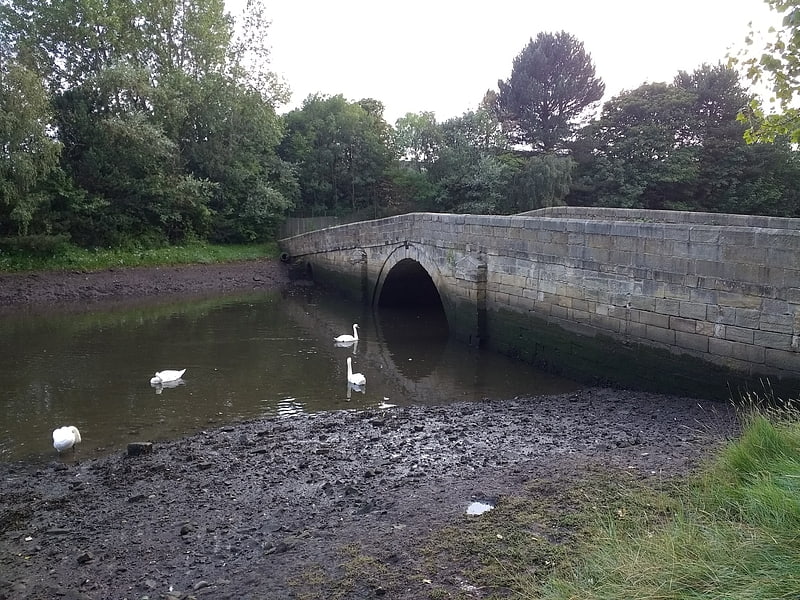
Bridge. Jarrow Bridge is a bridge in Jarrow, South Tyneside, England. Built from stone in the early 18th century, it previously carried the main road from South Shields to Jarrow across the River Don. It is registered as a grade II listed building.[1]
Town Hall
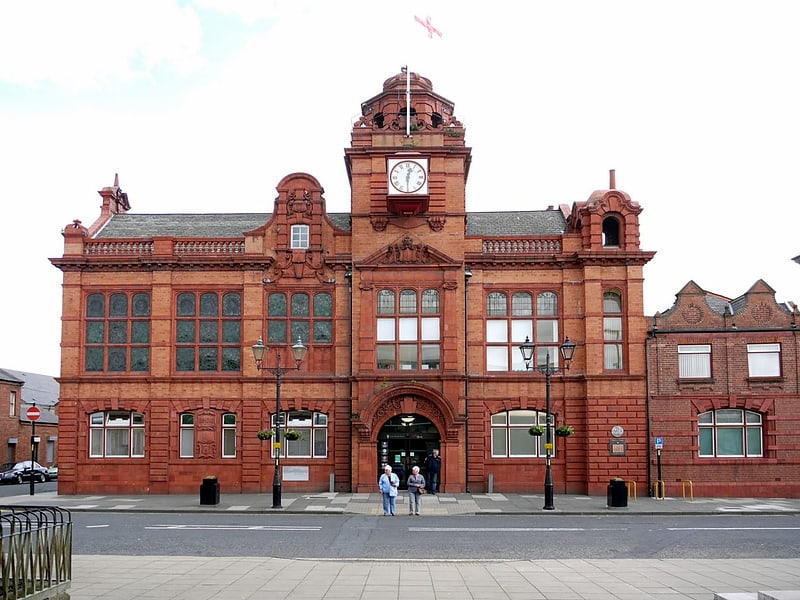
Local government office in Jarrow, England. Jarrow Town Hall is a municipal building in Grange Road, Jarrow, Tyne and Wear, England. The town hall, which was the headquarters of Jarrow Borough Council, is a Grade II listed building.[2]
Address: 27 Grange Rd, Jarrow NE32 3JY, Jarrow
Jarrow Hall
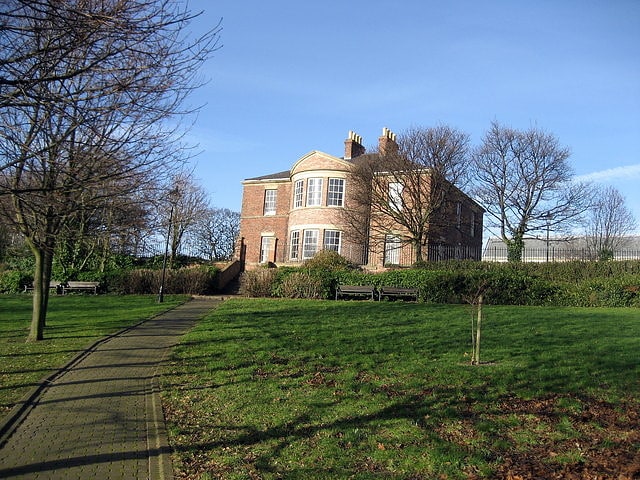
Jarrow Hall is a grade II listed building in Jarrow, Northeast England, and part of the larger Jarrow Hall museum site. It was built around 1785 by local businessman Simon Temple; he later went bankrupt in 1812 after a series of poor investments. The hall then passed through a number of hands before being let to the Shell Mex company in 1920, and then the Jarrow Council in 1935. The Council used the hall for a storage depot, eventually letting the building become derelict and in threat of demolition. It was rescued by the St Paul's Development Trust, which funded a £50,000 restoration project.
The hall then became the Bede Monastery Museum in 1974, as a means of exhibiting information about local scholar the Venerable Bede - the location of the hall next to St Paul's Church - part of the Monkwearmouth-Jarrow Abbey - meant it was an ideal location for the new museum. The Bede Monastery Museum became part of Bede's World which operated from 1993 to 2016, and is now part of Jarrow Hall - Anglo-Saxon Farm, Village and Bede Museum.
The hall is now used as the cafe for visitors to the museum and also houses the museum offices. A permanent exhibition entitled 'The Many Faces of Jarrow Hall' chronicles the lives of previous residents of the hall.
Adjacent to the hall is the grade II listed Jarrow Bridge which crosses the River Don, and once carried the main road to South Shields.[3]
Wallsend Town Hall
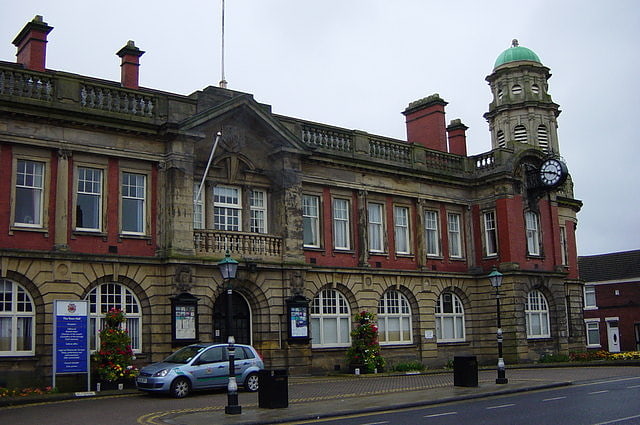
Wallsend Town Hall is a municipal building on High Street East in Wallsend, Tyne and Wear, England. The town hall, which was the headquarters of North Tyneside Council from 1974 to 2008, is a Grade II listed building.[4]
Monkwearmouth–Jarrow Abbey
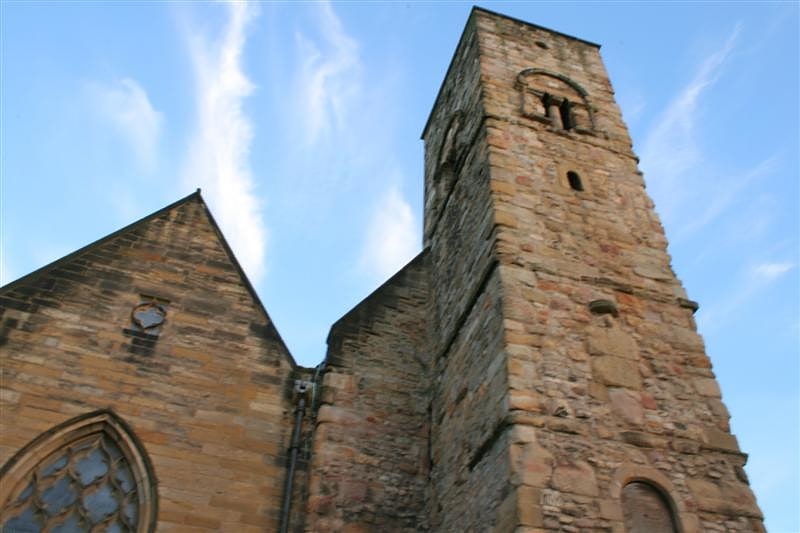
Abbey. The Abbey Church of Saint Peter and Saint Paul, Monkwearmouth–Jarrow, known simply as Monkwearmouth–Jarrow Abbey, was a Benedictine double monastery in the Kingdom of Northumbria, England.
Its first house was St Peter's, Monkwearmouth, on the River Wear, founded in AD 674–5. It became a double house with the foundation of St Paul's, Jarrow, on the River Tyne in 684–5. Both Monkwearmouth (in modern-day Sunderland) and Jarrow are now in the metropolitan county of Tyne and Wear. The abbey became the centre of Anglo-Saxon learning, producing the greatest Anglo-Saxon scholar, Bede.
Both houses were sacked by Viking raiders and in the 9th century the abbey was abandoned. After the Norman Conquest of England in the 11th century there was a brief attempt to revive it. Early in the 14th century the two houses were refounded as cells of Durham Priory. In 1536 they were surrendered to the Crown and dissolved.
Since the dissolution the two abbey churches have survived as the parish churches of Monkwearmouth and Jarrow. The two sets of conventual buildings fell into ruin. At Jarrow substantial ruins survive next to St Paul's church.
The site of each house is a scheduled monument. On the Monkwearmouth site St Peter's church is a Grade I listed building. On the Jarrow site both St Paul's church and the monastery ruins are Grade I listed buildings. In 2011 the United Kingdom nominated the entire Monkwearmouth–Jarrow Abbey site for UNESCO to grant designate as a World Heritage Site.[5]
Tyne cyclist and pedestrian tunnels

Tyne Cyclist and Pedestrian Tunnel was Britain's first purpose-built cycling tunnel. It runs under the River Tyne between Howdon and Jarrow, and was opened in 1951, heralded as a contribution to the Festival of Britain. The original cost was £833,000 and the tunnel was used by 20,000 people a day. Although it actually consists of two tunnels running in parallel, one for pedestrian use with a 3.2 m diameter, and a larger 3.7 m diameter tunnel for pedal cyclists, since refurbishment only one for both cyclists and pedestrians is now in use. Both tunnels are 270 m in length, and lie 12 m below the river bed, at their deepest point. The tunnels are over 60 years old and are Grade II listed buildings.
At each end, the tunnels are connected to surface buildings by two escalators and a lift. The Waygood-Otis escalators have 306 wooden steps each, and are the original models from 1951. At the time of construction, they were the highest single-rise escalators in the UK, with a vertical rise of 85 feet (26 m) and a length of 197 feet (60 m). In 1992, escalators with a higher vertical rise of 90 feet (27.4 m) and 200 feet (61 m) in length were constructed at Angel station on the London Underground. The Tyne Tunnel escalators remain the longest wooden escalators in the world.
20,000 people a month used the pedestrian tunnel in 2013.[6]
Tyne Tunnel
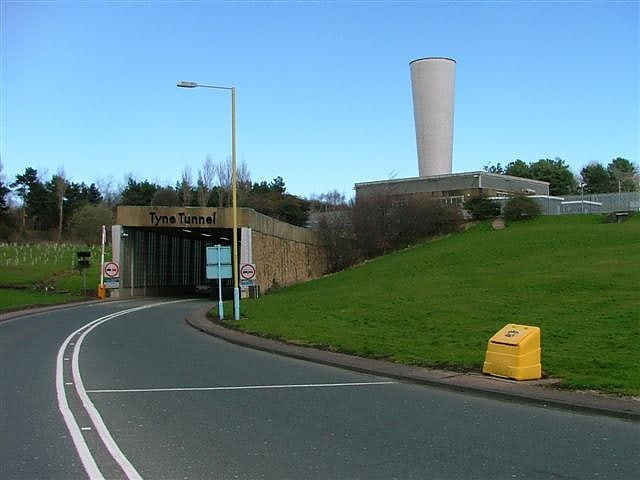
The Tyne Tunnel is the name given to two 2-lane vehicular toll tunnels under the River Tyne in North East England. Originally opened in 1967 and expanded in 2011, the tunnels connect the town of Jarrow on the south bank of the river with North Shields and Wallsend on the northern side. The tunnels are approximately 7 miles downstream, to the east of Newcastle upon Tyne. The Tyne Tunnel constitutes a part of the A19 road.[7]